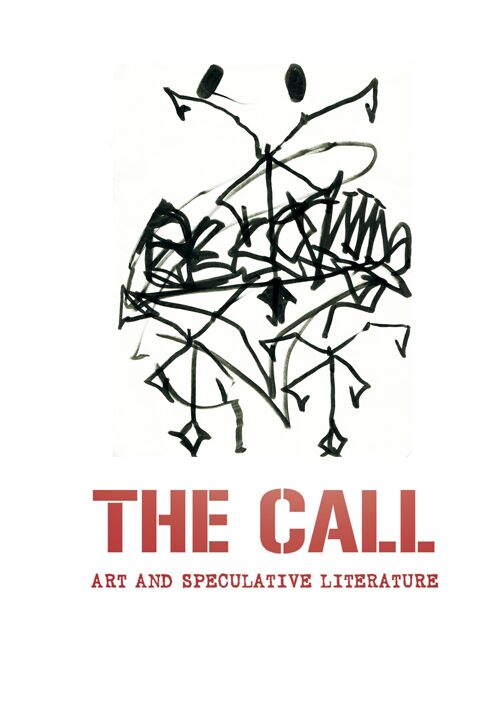
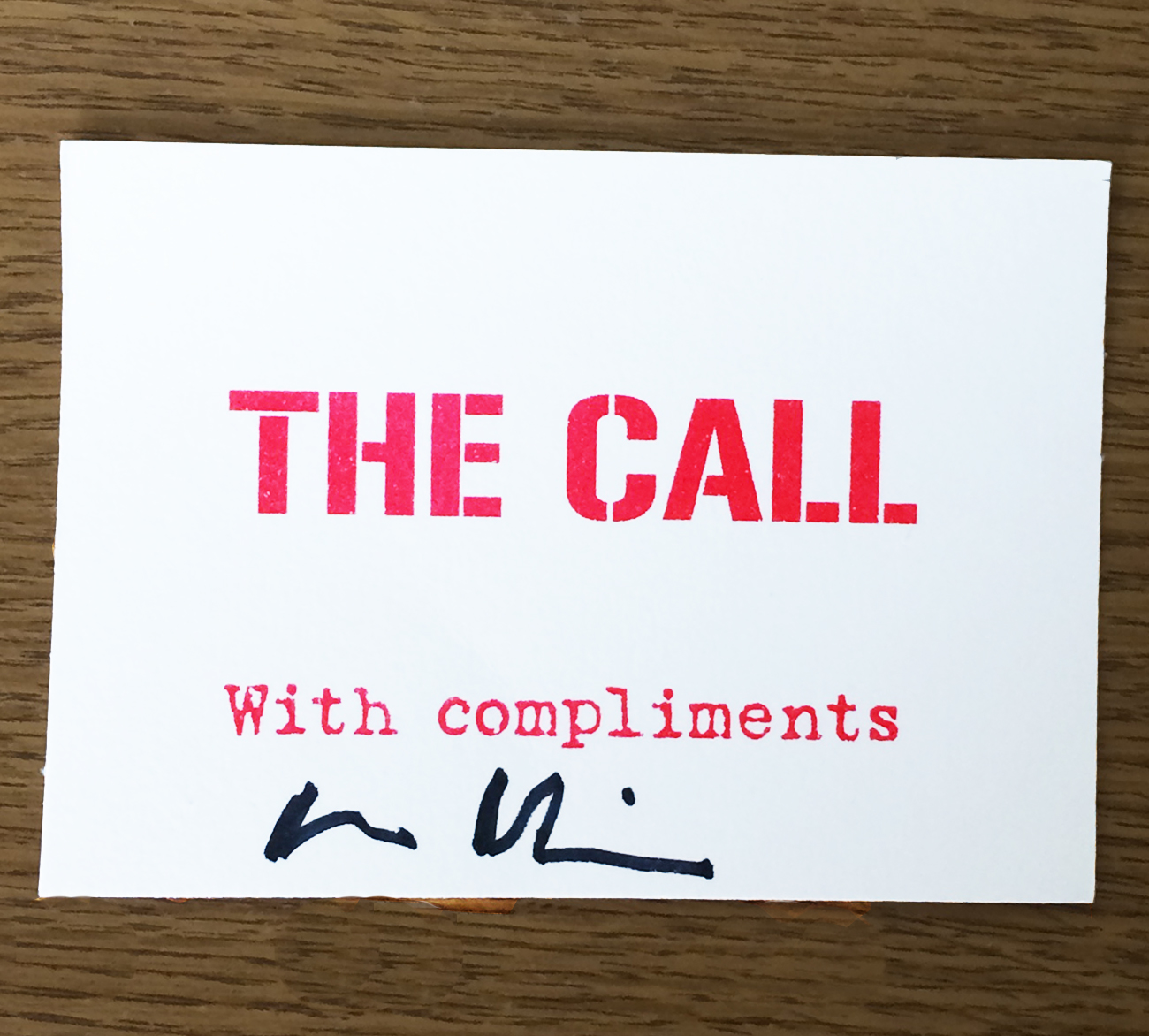
“IT IS TRUE, WE SHALL BE MONSTERS, CUT OFF FROM ALL THE WORLD; BUT ON THAT ACCOUNT WE SHALL BE MORE ATTACHED TO ONE ANOTHER.”
Mary Shelley, Frankenstein
This chaos of visionary artists and writers all scrambling to overload our servers has us now seeking extra download capacity to accommodate the demand. It matters not, for The Call is ever eager to seek your new and exciting submissions. We merely have this one modest and straightforward proposal for any prospective inner adventurer out there: that no matter how far-fetched or grandiose the notion might be, your idea will find a home here. If that’s a vision of a far-flung reality whose every law contradicts the principles of our drab being, then we want to hear it. Please send to ben@thecallzine.com and let the unreal be your point of convergence.
Ben Robinson, editor 13th October 2019
Cover: Kier Cooke Sandvik – Becoming, 2019
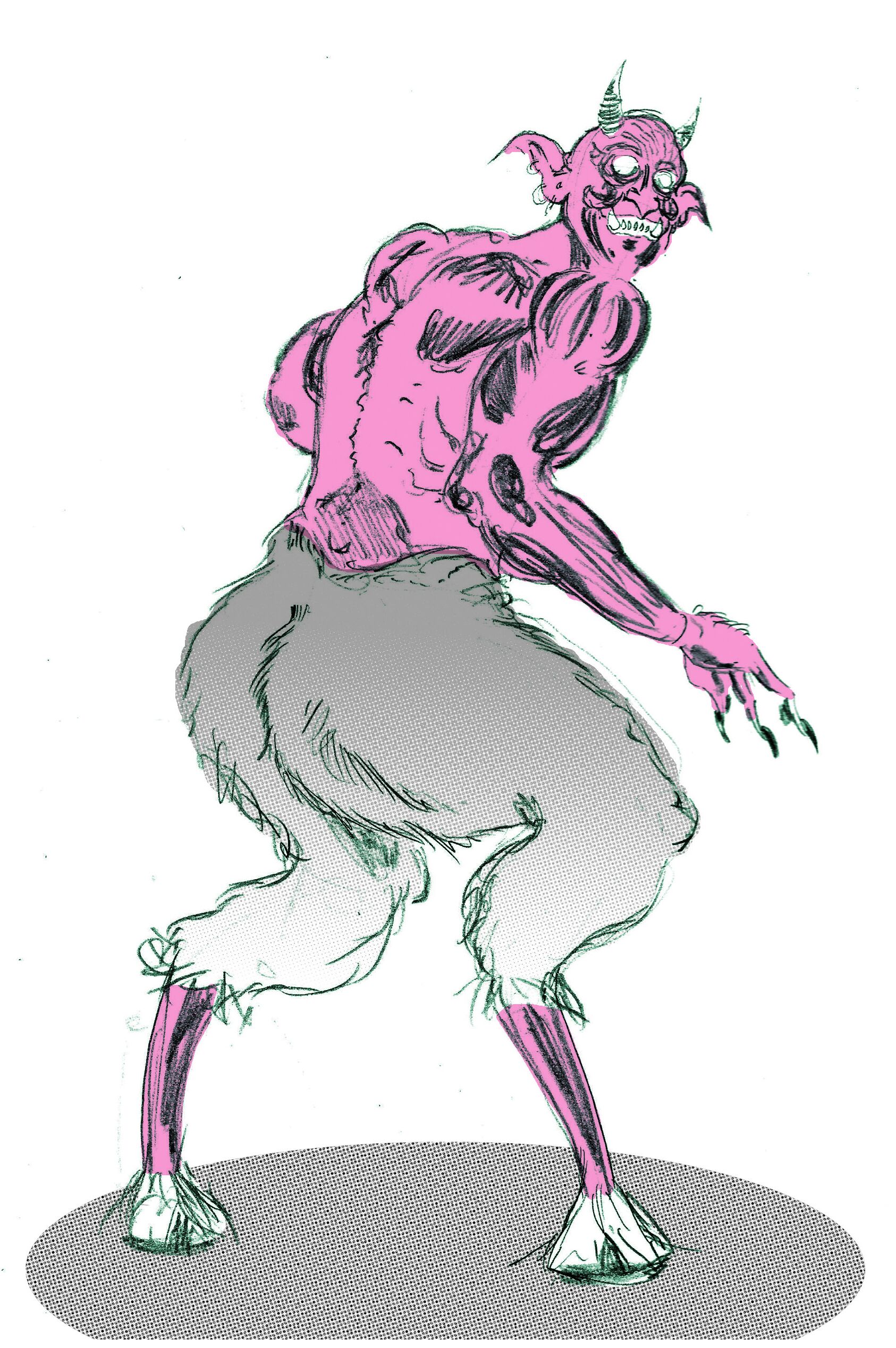
Steven Harper – Mr Devil, 2019
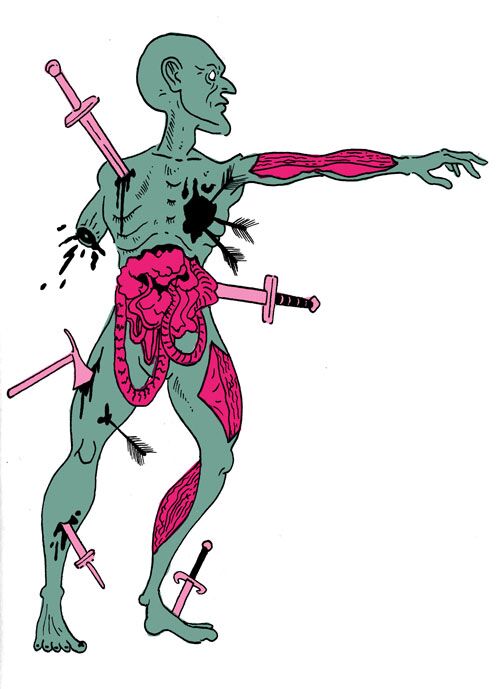
Steven Harper – Sliced and Diced, 2019
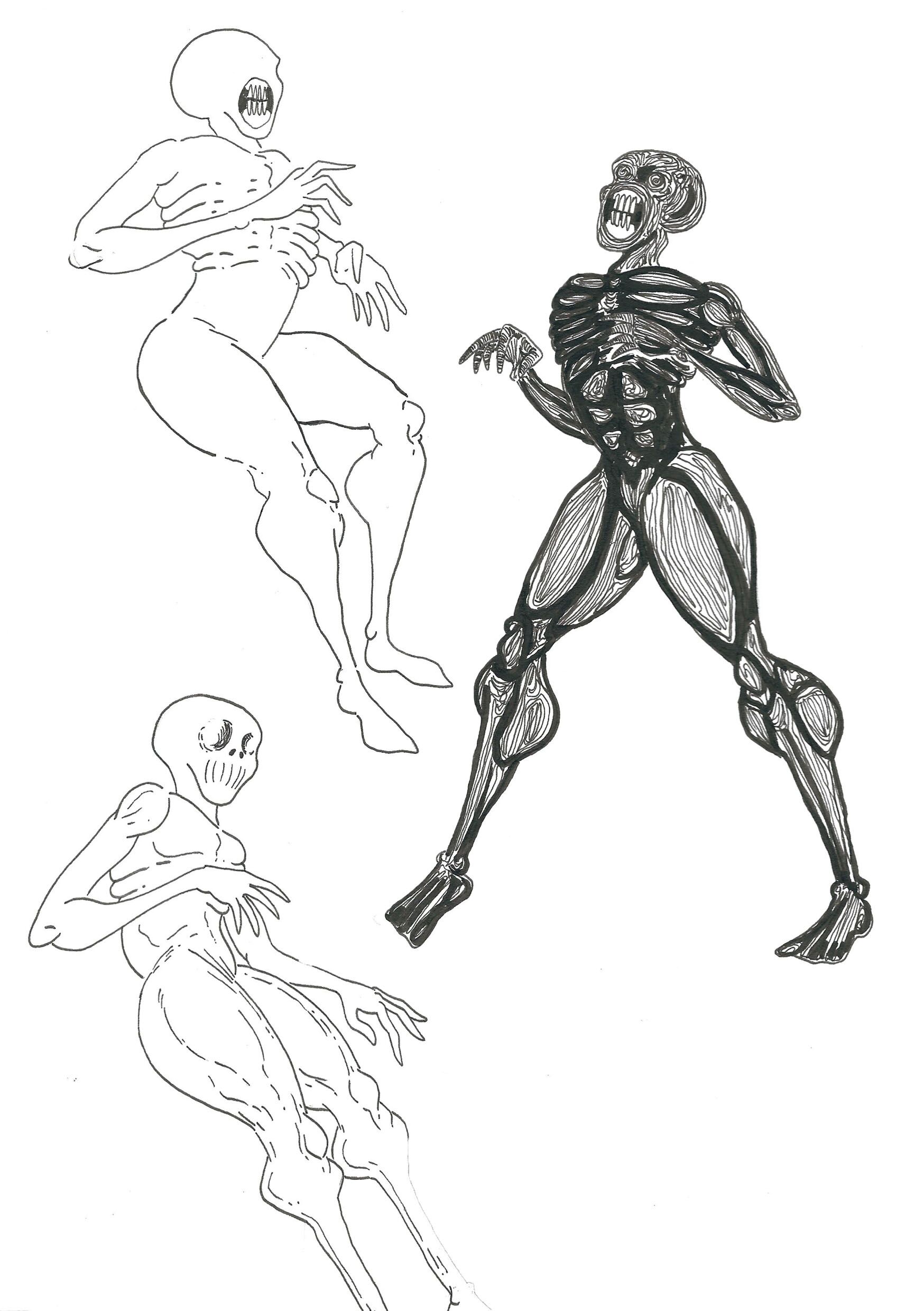
Steven Harper – Bodies, 2019
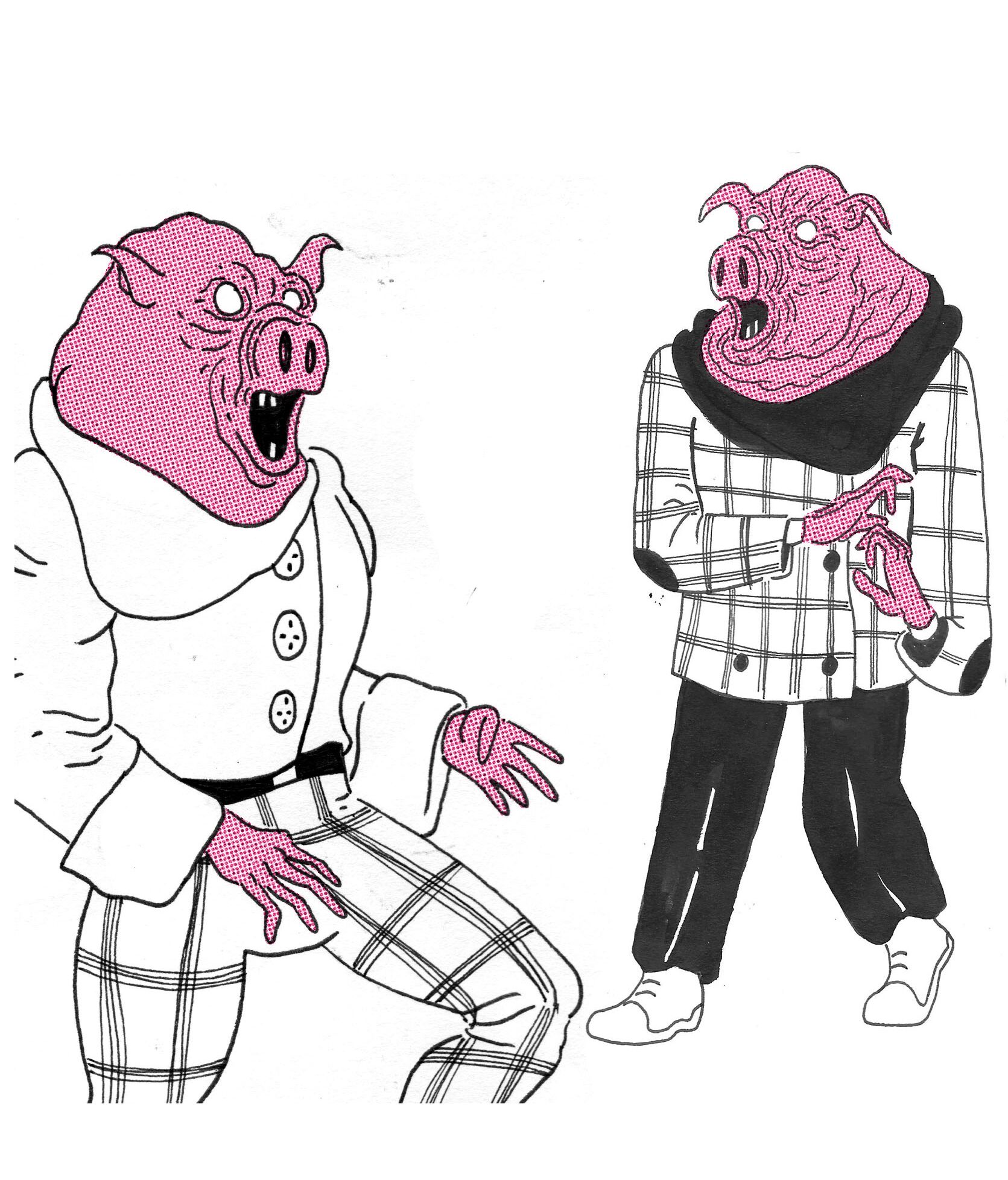
Steven Harper – Piggies, 2019
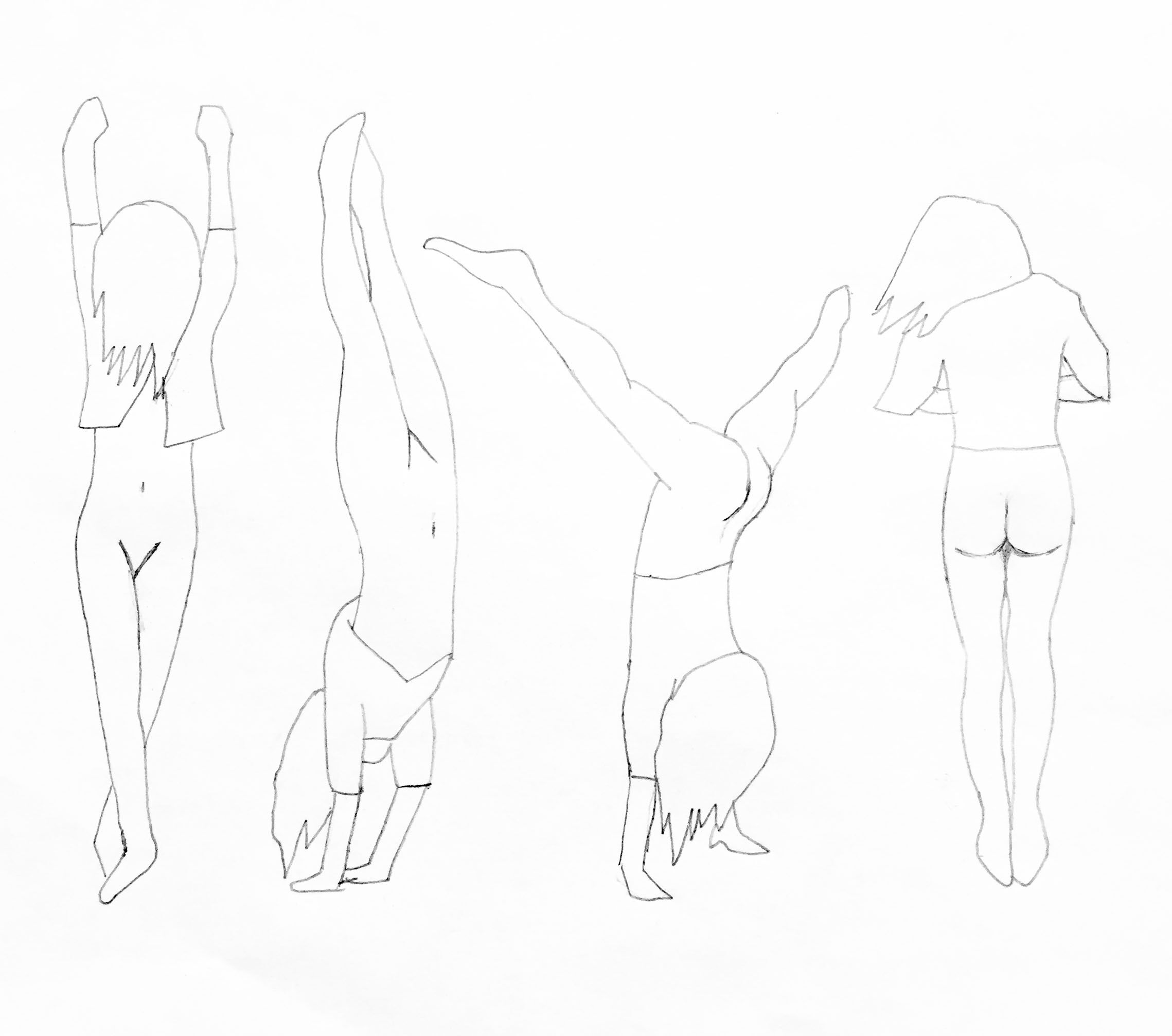
Image by Yvan Kawecki
Anne Lesley Selcer
She Opens Like an Angel Toward the World
She’s in the reeds. A nest of red is pulsating all ways around her head. She’s been smothered in seawater for days—caves of colored stones, unfamiliar creatures with eyes that flash. She pulls herself onto the bank. Let’s think about her body, draped in watery scarves and sashes. Let’s think of her legs flexing, as she thinks of us, watching. “I love the shadow world more than thee,” she thinks back at us, hauls one shapely leg over an erect cattail and centers herself on it. Sensation rushes in, bigger, brighter than her hair. Her head is on fire; she fucks til she’s done.
A choir of aquatic plants gives praise. She picks an unsandled foot along them. Giant white lily pad flowers open slightly. She’s hunting gently; the sky turns one degree from noon. A million-fold plants repeating is not quite enough for our hero. A hawk slices blue sky. She casts up bright green eyes. Her green eyes shout and with exactitude hone in on her next sexual meal.
She begins to climb a tree. O chorus of bees, o beautious dragonfly, you alone understand this form, heroic in its overcoming of everything not pleasure. The tree trunk receives her soft, cream-like feet. She smiles unconsciously up at its peak. The top is waiting for her so silent, so still…so gorgeously silent, so reliably still. She climbs to its head and encircles its trunk, she strokes its topmost leaves. Above her ember gleaming head, the hawk guards a patch of sky. She mounts the tip of the tree. A dragonfly climbs higher than ever it has flied.
All fauna and foliage is combed back and sated, sleepy and submissive as her feet return to ground. She casts green eyes toward the edge of the water. Smiling, one sucker tentacle pokes between the reeds. Her familiar monster. Our hero’s eyes narrow and flash bright green as her appetite meets its former match…
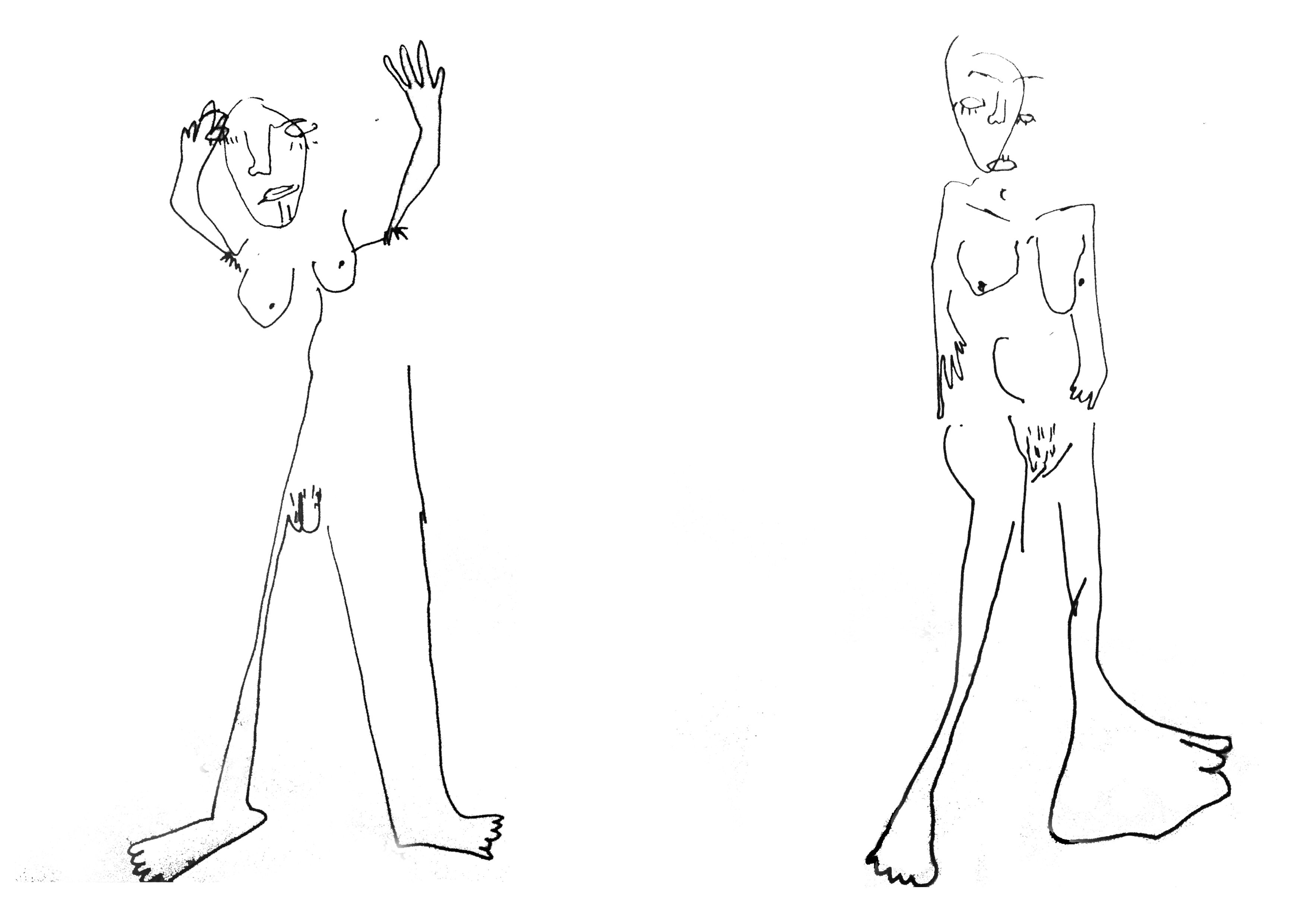
Lizz Brady – Untitled, 2018
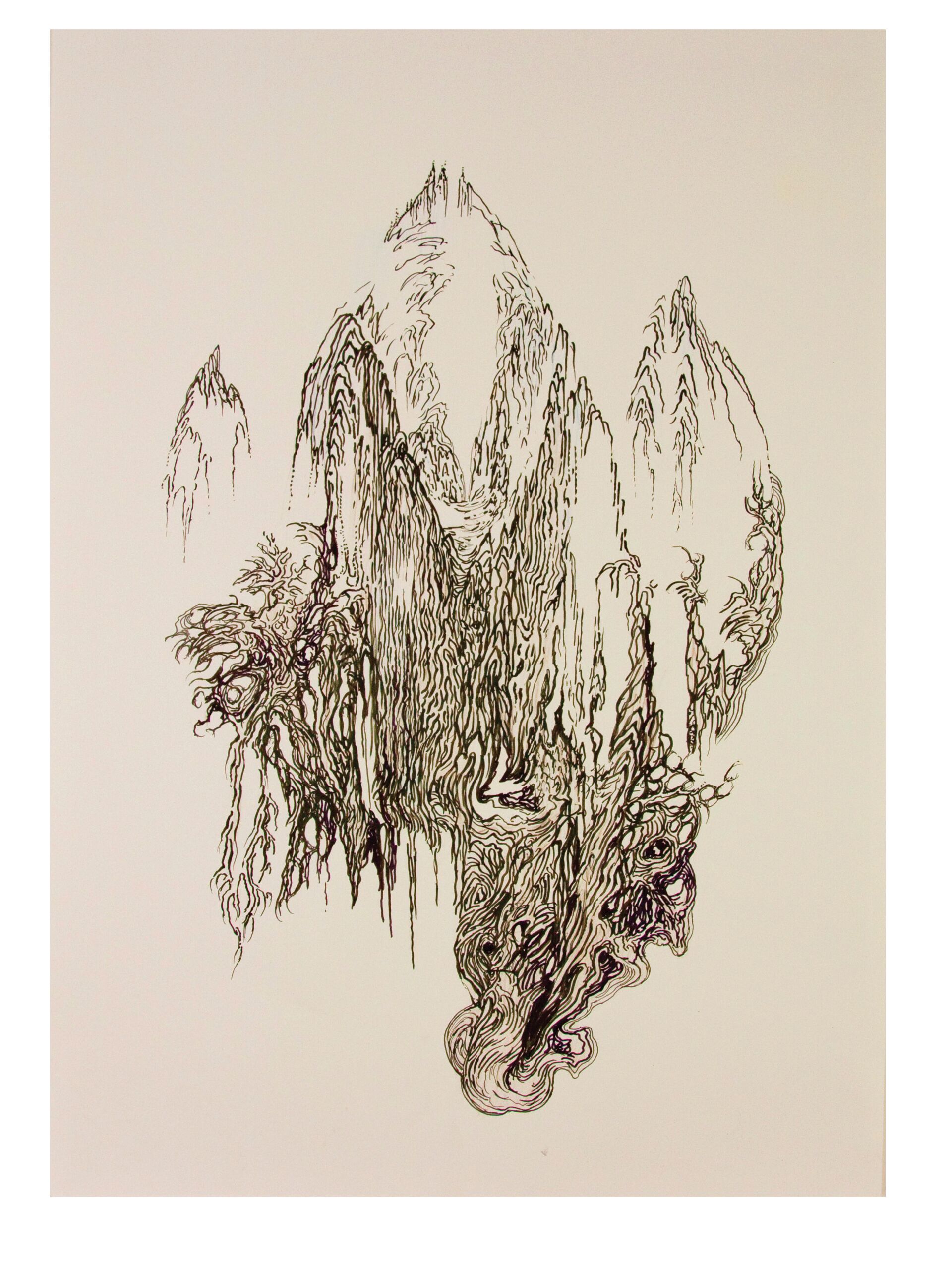
Norman Shaw
Inviolate
2018
Ink and coloured pencil on paper
59.4x42cm
The Black Fuse
Cradling the record sleeve in his left forearm, he prised open its slit with the thumb and forefinger of his right hand and slowly thrust his hand in. Taking care not to touch the exposed faces of the record, his middle fingertip sought the hole at the centre. Simultaneously, his thumb found the edge of the record as it was coaxed out.
There was only one copy of this record in existence. Its anonymous creators made it from a material that would disintegrate immediately after the stylus had bumped down its spiral valley, as a glacier scours a glen. Just one track on one side, to be heard only once. Its grooves, they sparkled and shone in an unusual manner, seeming to shift and shimmer like fluid. This undulant movement deep within the tightly spiralling grooves was quite hypnotic, mesmerising.
There was no label. An inscription on the run-out groove, handwritten in acutely angled scrawl, read: ‘THE FORCE THAT THROUGH THE BLACK FUSE DRIVES THE RECORD DRIVES MY BLACK AGE’. He understood the reference to Dylan Thomas’ poem ‘The force that through the green fuse drives the flower’. In this case, the electrical force that drives the record emanates from a hydro-electric dam far up the glen.
The cardboard cover was black, apart from a small white logo printed at the top left-hand corner of one side, crude yet complex, and entirely illegible. Spidery forms in strange geometries with icicles hanging from them. The same logo appeared on the front of the t-shirt that he wore. He knew that it was essential that the sole listener to this record wears this t-shirt whilst listening to the record. He also knew that the record must be listened to at a specific astronomical moment, during a specific stellar configuration which appeared unpredictably and only every few years, always at different dates of the solar calendar.
Within the sleeve was found a sheet of thin white paper, upon one side of which was typed a manifesto:
‘We are driven by the belief that the creation of any artwork that functions truly as art is only possible through a total rejection of normal standards and conventions, and by discarding any previously rendered or preconceived point of view. This attitude demands a total disinterestedness in human affairs, and also an aesthetic that thrives consistently on the warped and oblique strategies of a truly disillusioned perspective. The artist must be someone who sees through the feeble machinations of conventional human culture, and seeks to reveal its blinkered hypocrisies by tearing it apart at the seams like a ravenous demon.
This artist must be committed to an existence that promotes loneliness and isolation, psychological cul-de-sacs and pointless conjecture, extreme hallucinatory expeditions, fevered dreams, and de-centred religiosity, among other exercises. He seeks the reverse hidden behind the everyday and willingly shuts himself darkly into his self-made traps, vibrant with odours of decay and stillness. Only then, in these exquisite prisons can he construct his fabricated nefarious world from the dessicated fragments of his delirious imagination.’
A second sheet of paper held typed instructions and a precautionary note/disclaimer.
He checked his planisphere against his chronometer. It was time. According to instruction he orientated the space towards black mother mountain, a sacred hill whose Gaelic name indicated a link to the Cailleach Bheur, devouring mother-goddess of winter and chaos.
He wore the t-shirt. The correct environmental atmosphere had been established, necessary precautions taken. The numerous speakers were arranged in correct geometric formation. Everything was in place.
With the nonchalant deftness, disinterestedness even, that comes from years of habitual practice, he smoothly dropped the record over the spindle of the turntable.
Pressing the start switch on the modified record player, it began to spin in an anti-clockwise direction, maintaining a constant speed.
If someone who knew him, someone who was acquainted with the language of his body, were present, they would see that at this point in the proceedings, his position and aspect betrayed an abstracted tension – stiff, and leaning with anticipation in the delicately loaded space between the lifting of the tone-arm and the moment of the needle’s contact with the record.
His hand trembled as it gripped the arm of the cartridge and moved in a slow arc towards the backwards-spinning turntable.
There was a thick click as the needle found its groove, followed by the rhythmic rumbling sound of the run-in groove before the actual music started. This preliminary sound itself was deafening, and seemed to last much longer than usual, seconds stretched to aeons. He carefully positioned himself.
The music hits. Crashes in with mountains of noise, huge and terrifying. Roaring soundserpents writhe through the rumble, spitting fiery frequencies. Clouds of bellowing bass billow below disharmonic storms. Heaving. Seething hisses slant and swoop. Sinking songs and wrecked words. Vast chords of metaharmonic complexity. Submelodic interweavings of unimaginable ugliness and unease.
Vibrational antistructures generate hideous sonic mutations, sprouting dark fungus-gardens of sound, dripping with entropic tonalities of terror. A curruscating melody appears, then seems to eat itself from the inside, turning itself into an unbearably tragic lament that triggers paroxysms of violent grief.
Wave after wave of bewilderingly engineered sound structures tilt and groan under their own sonic weight. Multidimensional frequencies in a chaotic kaleidoscopic collage of chromatic complexity. Emanating from deep deep down in unfriendly abysses, way down in hell-wells breathing ancestral breaths aeons old, from tongues in deep-mined fires that melt the hills, flickering the mountain roots and trembling the bones of glens.
Twisted trees of sound with distorted branches, leaves ripped free in the winds of noise and sent spiralling through darkening skies of heavy din. Darkening, darkening. The heavy roar weighs in, clamping down with anti-harmonic magnetism. Earth reaches up to the sinking sound, rocks now liquid torrent up to the sonic source, hungry and ancient. Clouds funnel down, and the stars themselves are tugged free from their moorings by the indefatigable centripetal force.
Heavy, heavy, the music becomes denser and heavier and bears down on him, his shoulders sagging with the weight in his skull, leaden seas crashing into his earholes, slowing down and finally engulfing him in vast crystalline silence.
When tomorrow hits, it’s gonna hit you hard. A slow warping multitonal feed current inaugurated by weeping angels. From the void above countless aethyrs, ready and compacted, sorrow-bound and haunted. Down the mountain path, it’s an inexorable descent, down indefatigable cloud-enfolded wynds. Down, down the white ghosted ways, desecrated pinnacles dripping to enrivered corries.
Climbing down from the heights, geometries are broken, ouroberos uncoils and slides away.
From eight miles high, falling from azure ecstasies, spiralling through days of drawn-out bliss, downwards from the Golden Age, from Tír na nÓg, banished from Avalon. The downward drift. Demons are attracted to your bright dance. They sidle with you, slipping silently into the light from shadowed borders.
Hurtling headlong through nights. Dripping down in inky blackness. Through flames from rites of nameless gods, thoroughly drenched in jagged time. There, you, in aeons of death. A light. An intention. Solid, unfurling in various directions. It was a long time coming.
You are at the foot of the mountain. Unholy mountain. Inviolate. Un-nam’d. Unutterable. Against society. Anti-urban. Indescribable. Never climbed. Never seen (in her entirety). Incomprehensible. Never thought of. We cannot feel her boundaries. Shrouded. Veiled. Forevernight at her top. Everdark.
Unmeasured. No words or numbers stick to her. Not of any country. No history. No culture. Uncomfortable. Scorning humanity. Rising, rising. Above and beyond. Before and behind. Great mountain of the anti-human. Mountain of not. Despiser. Obsesser. Beyonder. Majestic Desolate Eye.
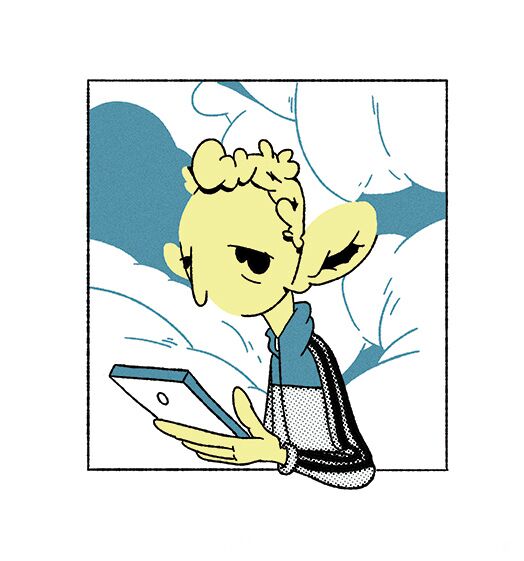
Matthew Gow – Head in the clouds, 2019

Matthew Gow – Floating World, 2019
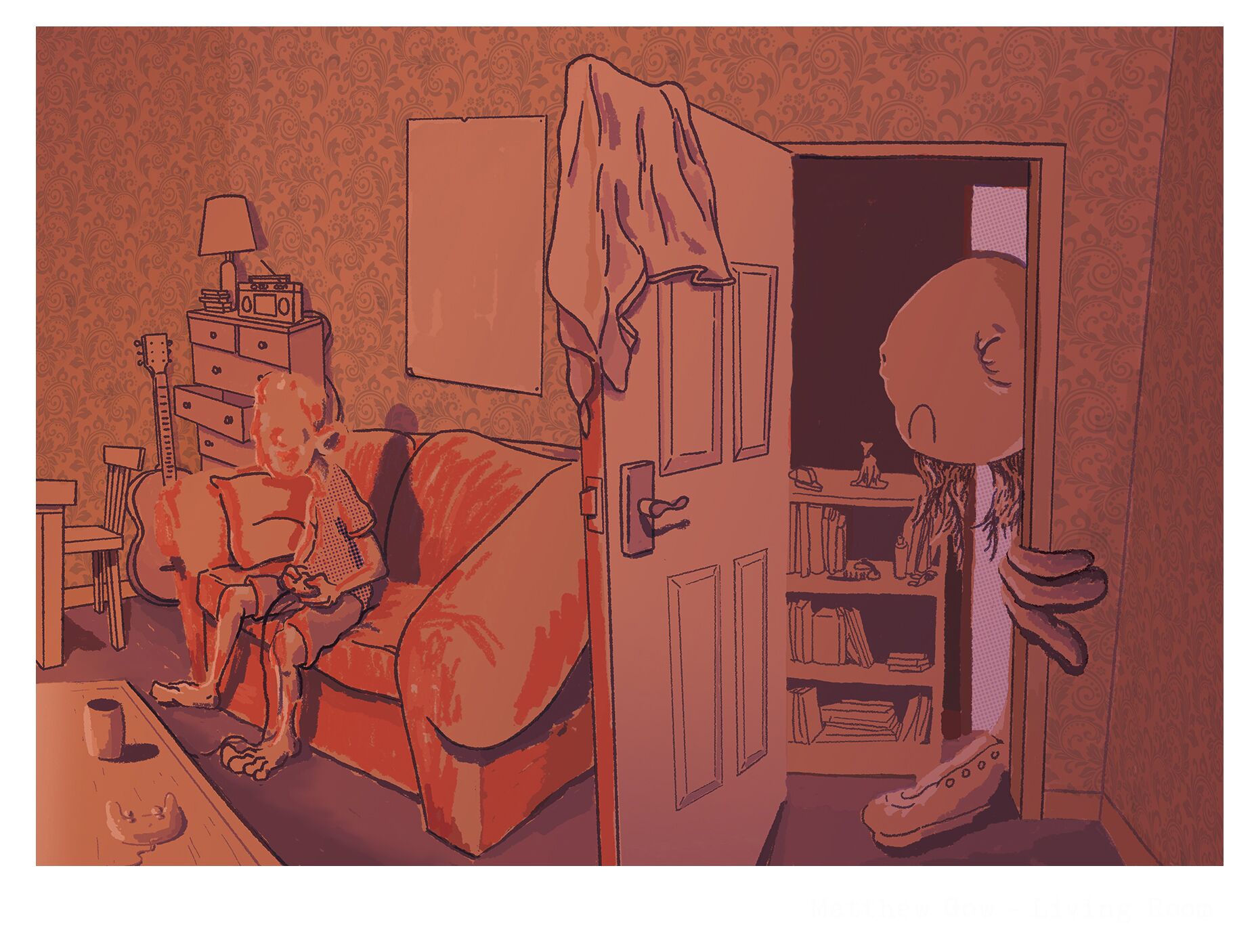
Matthew Gow – Living Room, 2019
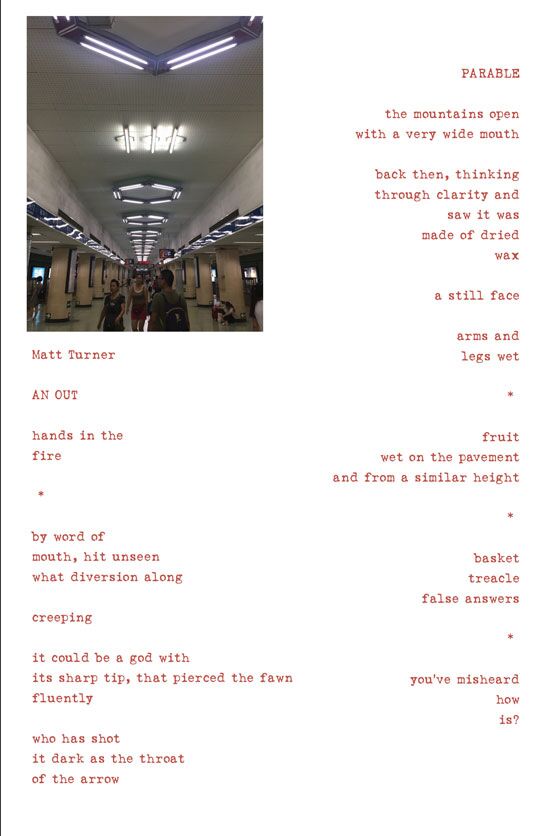
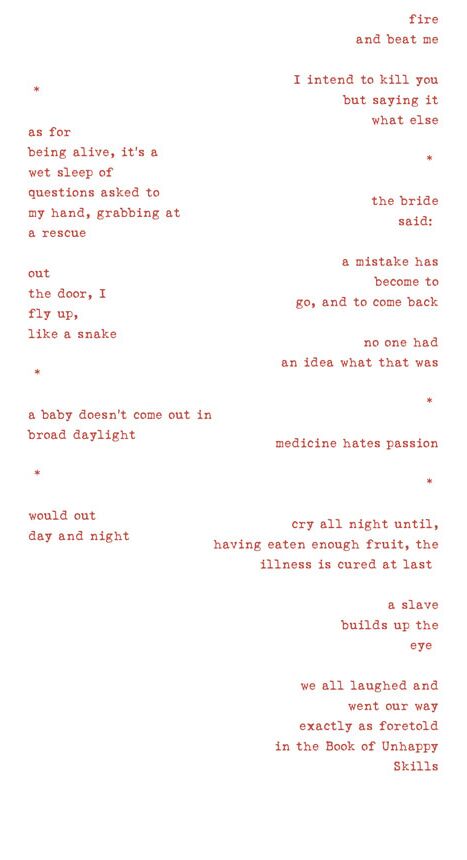
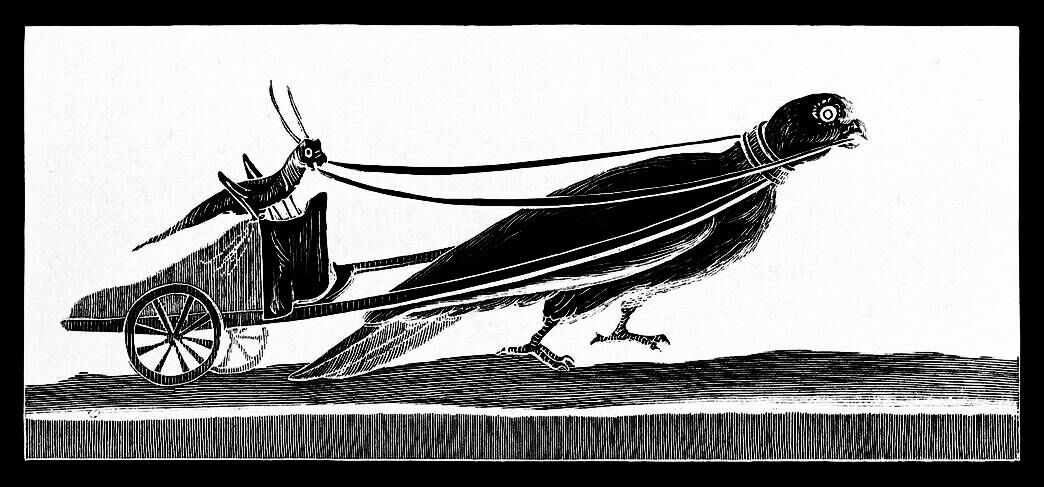
TATT by Rebecca Gransden
Doctor lifts his ultraviolet pen. His office is dotted with sterilised pictures, the frames filled with certificates, accolades and posers, grinning.
The boy shuffles onto a grey armless and open-backed chair, the cushioned material mottled to disguise wear and dirt. He considers the people who have sat on the chair since it was new a few years ago: all their complaints, the news they’d been forced to process, the all-clears. Somehow he’s ended up having to do this alone. He can’t remember how he got to the doctor’s office.
The nib of the pen glows like it’s an escaped prop from a science fiction film—phosphorescing, white star with a purplish halo. The doctor waves it around, looks at it. He wears glasses, this doctor, and the lenses seem light-reactive. He resembles Burt Reynolds.
“So Finlay, do you know why you are here today?”
Finlay stares and micro-convulses.
The doctor scribbles something onto a notepad and then circles a mouse around on his desk, eyeing a computer monitor.
“Well, we’ve been expecting your test results haven’t we?” the doctor says.
Finlay is unsure if an answer is expected of him. After a moment he goes to shrug his shoulders but the doctor carries on speaking before the motion can be completed and his shoulders sink strangely while the man talks.
The brightness of the overhead light amplifies and Finley feels its heat radiate, a static emanation unchanged since installation. Finlay’s hair—middle parting, tawny—starts to prickle.
“I’m glad you managed to make it down to the surgery to see us Finlay. How have you been feeling?”
“I’m okay. Sometimes my tongue hurts.”
The doctor moves the mouse again, his gaze once more directed at the monitor. He continues to talk. The words clump together, an electric sound, synthesised. All vowel.
Finlay nods, unable to decipher any meaning, and hopes no questions that require elaboration past agreement come up. The nods are working, for now. He turns his eyes to the large window featured along one side of the small room, a sideways glance. Finlay had thought the room was situated on the ground floor—he doesn’t recall using stairs or an elevator to get here (he doesn’t remember how he arrived at all, but he does remember that he doesn’t remember)—but this window is high up and looks out at a grey sky swooped with slitty gulls. From Finlay’s viewpoint the sky dominates and the tops of tower blocks interfere in the corners. There is a pigeon standing on the window’s sill outside, balancing, behind the glass.
The bird looks into the room, stares through the artificial light, with an eye bulged and swollen, coming loose from its socket. The eye is red and pink. Something leaks from it. There are black specks. Finlay sees it and it is looking at him with its eye.
Finlay keeps its gaze, and waits for confirmation that the eye has the bird’s intent, that the eye’s current diseased condition isn’t restricting its movement and the bird is—by chance—pointing a blind eye at him, specifically, but by accident. The pigeon rolls its head, as if detecting and answering Finlay’s question, and asserts its presence by freely rotating its head around, the eye left fixed, with the enlarged pupil always stuck on the boy’s reciprocal stare.
The room smells of traffic fumes. Finlay lowers his chin, the words of the doctor snuggle inside the man’s mouth, not making it out. There is a warmness. Finlay closes his eyelids, using mechanics to whoosh the light in and out, until the scrunchy dark turns to a nothing he sees through.
He wakes and retains the same position, his impulses leading, pulling him to not jerk and panic with the strangeness of the doctor’s office, and falling into sleep there, for an unknown amount of time. What comes to him after the creeping return of brightness is the acknowledgement that the doctor still talks, before he even hears him. If the doctor maintains his words then Finlay will not be questioned.
The pigeon is still there, the boy can tell, he doesn’t have to raise his head but he wants to so he does. The doctor is in his own world, the words he’s attempting aimed at some unknown recipient, somewhere in the wall. Finlay smells blood and looks about, to where fine spatter mists through a white plastic vent near the floor at the back of the room. The pigeon has pulled out some of its feathers and has a bald patch under it wing. It flaps as if presenting Finlay with what it has done. Somehow, with determination, it stays upright on the windowsill outside. The muster in its demeanour makes it strain and its eye protrudes even more.
The doctor now sounds as if he is singing. He’s not, it just comes out that way. There are tones in what he does, and they infect everything solid, but especially liquid. Finlay feels it around his system, tugging through bridges that flush his vitals. The concentration causes him to sink and something akin to sleep but not entirely it interrupts and he skips through the next moments.
After this the pigeon is in the vent, its head busted through the middle, as if it is trying to find a way in. In its efforts the eye has scraped over its face and it wriggles, its head the only part of the bird forced through the brittle and broken plastic. It still looks at Finlay, but only with its remaining eye.
The doctor sees the bird and stops talking. He raises a hand that says in gesture that everything is under control, that he is familiar with a situation such as this and what he will do next will sort it out. He swivels his chair and stands up, his hair on end, made of dead fibre-optic cabling.
The pigeon freezes. It has raspy breathing.
The doctor moves up to the vent and crouches down so he’s more level with it. From his pocket he picks out a long pink tube that could be an intestinal worm but could also be a piece of animal intestine. As he dangles the tube the pigeon shifts its attention from pain and watches the snaky movement. Its beak snaps as its one eye locks onto the incoming morsel.
Just as he’s about to feed the bird the doctor micro-jerks. He has remembered something. With arm reaching out, meat tube almost at mouth, the doctor revolves his head and looks at Finlay.
“Where’s your mother?” he says, clearly.
“She’s Tired All The Time,” Finlay says.
Kier Cooke Sandvik is a Norwegian artist working with trauma and the body, in the mediums of drawing, sculpture and photography. He is currently doing his MFA in Oslo.
https://www.kiercs.com
Stevie A Harper is a cartoonist based in Glasgow who has recently had to move back in with his parents because he is a cartoonist based in Glasgow.
Instagram: @stevieaharper
Anne Lesley Selcer is a poet who writes about art. She is the author of Blank Sign Book, a collection of essays, and of Sun Cycle, a poetry book about the image. Her chapbooks and gallery publications include from a Book of Poems on Beauty, Banlieusard, and Untitled (a treatise on form).
Lizz Brady is an artist and curator living in Manchester, UK. She challenges the links between the physical and the intellectual through the building of installations to form ‘The Moment’ where juxtaposed ideas permeate to fill the empty spaces, in the solid world or within our imagination.
Norman Shaw is an artist, writer, and musician from the Scottish Highlands.
https://www.normanshaw.land
Matthew Gow is an illustrator based in Dundee who’s practice primarily involves drawing. A lot of his work is narrative-based, featuring characters navigating surreal and dangerous circumstances, often in comicly nihilistic fashion.
https://mattgow.weebly.com
Matt Turner is the author of the poetry collection Not Moving (2019), and the translator of Lu Xun’s collection of prose poetry, Weeds (2019). His essays and reviews can be found in Los Angeles Review of Books China Channel, Hyperallergic Weekend, Music & Literature, Cha, and other journals. He lives in Brooklyn.
Rebecca Gransden lives on an island and writes sometimes. Her books are anemogram., Rusticles, and Sea of Glass.
Twitter @rlgransden
https://rebeccagransden.wordpress.com
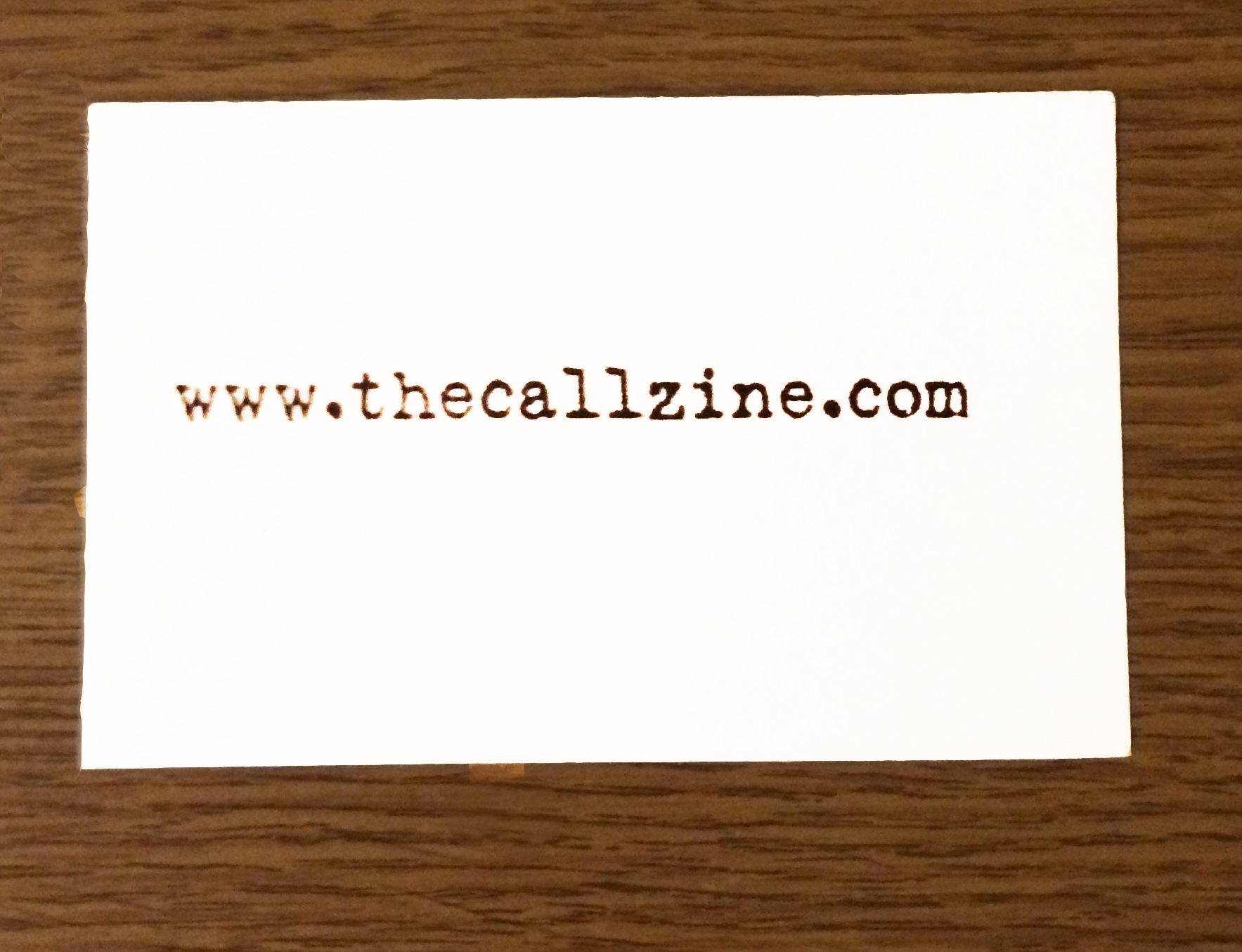
https://thecallzine.com/zine/issue-3/
*
p.s. Hey. The blog feels so very lucky to be one of the red carpets upon which the new issue of Ben ‘_Black_Acrylic’ Robinson’s amazing art and lit zine The Call enters the world, and by world I mean you. Please spend the local portion of your weekend exploring the selected tastes of The Call #3 on view and then go see and/or download your own personal copy of the teeming totality when you reach the accommodating link. Thanks, everybody, and mightiest thanks to you, Ben.




 Now available in North America
Now available in North America 
Thank you so much for showcasing The Call #3 here this weekend! I hope the LA Halloween tour is all you dreamed it would be.
Ben, the new issue looks great. Look forward to checking it out in more detail.
Hope the LA trip is going well, Dennis, wildfires and all. Legendary Pink Dots were in town, Ed Ka-spel in fine form. And Wadada Leo Smith played a more uneven set with a quartet with Pheeroan Aklaff. Will be a packed weekend with lots of (yikes) grading, and catching some of the Terry Fox exhibits around town.
Bill
Thanks, Bill!
Ver intense, Ben. And very welcome.
Are you familiar with Harry Crosby?
Cheers for that David, looking over his story just now. Seems the fellow knew how to have a good time!
Already ordered it, greatly looking forward to it! Love the cover art…
Your copy is winging its way over the Atlantic.
ben-
this looks awesome. if it’s not sold out when i get back from this work trip, i’m ordering one.
d-
i dunno if you’re going to see this comment before it happens, but i am going to be in pasadena for work from wed-sun this week. would love to get together if you’re not too busy. maybe hit me up on facebook, or should i do that perhaps?
anyway, how’s tricks? life is going pretty well up here, if i could just get my chemical imbalance to cooperate with me.
hope you get this message soon and that all is well &c. talk soon. love.
-c
Cheers! Ordering details are on the website, hope you enjoy x